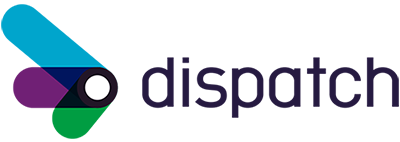At Dispatch Integration, every integration and automation engagement starts with the same conversation: how alignment between IT and the business owners in a department are a critical starting place for transformation. Everyone nods in agreement — alignment is critical. But saying it and doing it are two very different things.
When alignment is only theoretical, automation gets bogged down. IT becomes a bottleneck, business teams lose momentum, and employees are left with broken processes. But when alignment becomes practice, platforms like Workato make technical deployment and ongoing maintenance far more streamlined.
No enterprise is immune to the alignment challenge. That’s why we asked Workato to share how they approached it inside their own organization, the role IT plays, and what happens when HR is empowered to innovate directly on the Workato platform.
The Problem When Ownership Is Unbalanced
In many companies, ownership skews in one of two directions:
- IT owns everything. This keeps control centralized but slows progress. HR waits in line, critical initiatives stall, and IT’s backlog grows.
- HR owns everything. Without oversight, this creates “shadow IT” — duplicative tools, security risks, and fragmented processes.
Neither model works. When ownership sits entirely with one group, frustration builds and transformation falters. The cost isn’t just technical inefficiency — it’s cultural. HR feels blocked, IT feels overrun, and employees feel the pain in everyday processes like onboarding.
How Workato Removes the Blocker
Workato faced this same challenge as they scaled. Their HR and IT teams chose a shared model: business empowerment with IT enablement.
IT would set the foundation, including policies, workspaces, and governance. HR teams would have the autonomy to build automations inside those boundaries. This wasn’t a free-for-all. It was structured freedom, supported by Workato’s GEARS framework (Govern, Enable, Adopt, Run, Scale).
Instead of IT acting as gatekeepers, they became enablers by equipping HR to innovate securely. For HR, the impact was equally clear: they could finally design workflows that reflected their priorities without waiting on a ticket queue.
Tackling a Big Challenge Together
The turning point came when HR and IT tackled a big, visible challenge together: employee onboarding.
Historically, onboarding at Workato, like many organizations, meant checklists, handoffs, and manual processes that were susceptible to errors. It drained HR’s time and created the potential risk of a poor first impression for new hires. By co-designing the process, HR and IT rebuilt onboarding into a fully automated experience.
From the moment a candidate accepted an offer, everything was orchestrated: accounts were provisioned, applications were assigned, and communication was triggered automatically. New hires arrived on day one with everything ready. HR focused on culture and IT saw a dramatic reduction in support tickets related to employee onboarding.
The win was bigger than smoother onboarding. It was proof that shared ownership works.
From Proof to Self-Performance
Touchless and automated onboarding, enabled by IT, boosted the confidence of the HR team. HR realized they didn’t have to wait for IT to transform processes, and in Workato, they had a tool they could use to securely continue building automations.
Workato’s IT team supported this shift with workshops, hackathons, and enablement sessions. HR specialists began creating their own automations — from generating employment letters to managing compliance workflows. The work was safe, secure, and impactful.
The key wasn’t just technology. It was a mindset. IT never said, “That can’t be done.” They said, “Let’s figure it out together.” That encouragement turned HR into self-performing innovators, with the context and confidence to keep building on the platform.
A Model for Lasting Transformation
Workato’s experience shows that alignment isn’t just a kickoff conversation. It’s an operating model. When IT holds all the keys, progress slows. When HR tries to own it all, risk increases. But when ownership is shared, transformation accelerates.
The real story of HR automation isn’t just about getting work done faster. It’s about building trust, autonomy, and a culture of innovation inside the business. With the right platform and the right partnership, automation stops being an IT project and starts being a company-wide capability.
Hear more about how Workato’s IT and HR teams co-created a culture of shared ownership when it comes to automation. Watch the webinar on-demand.
Cameron Hay is the CEO of Dispatch Integration, a data integration and workflow automation company with clients in Canada, US, Europe and Australia. He has over 30 years of leadership experience in various technology-oriented industries.
